- Home
- James A. Michener
The Bridge at Andau Page 9
The Bridge at Andau Read online
Page 9
Inside the square the college student said to his men, “We will die here today.”
The seven swift tanks, having completed their first act of revenge, now rushed at Moricz Zsigmond Square, but the defenders were so well dug in, so well armed and so daring that all the tanks were destroyed. The November Sunday then settled down into a brutal battle between more and more tanks and the fiery young men inside the square. It was here, facing youngsters, that the Russians learned that their grand plan for a quick humiliation of Budapest was not going to work. They would have to dig out the Hungarians man by man.
Among the freedom fighters inside the barricades at Moricz Zsigmond Square was a twenty-year-old youth, tough as nails but almost boyishly eager to be a story-book hero. His name was Imre Geiger, and his great sorrow was that throughout the entire revolution he never acquired any weapon larger than a rifle. He felt that if he had been able to get hold of a machine gun the outcome of the fighting might have been different.
Geiger was a handsome fellow, dark, chunky, with fine teeth and jet-black hair which he wore in a crew-cut. He wore a turtleneck sweater, kept a cigarette dangling from the left corner of his mouth and tried to talk in a snarl. He was on duty when five fresh Russian tanks whipped up to clean out the square.
“They didn’t succeed,” Geiger reports. “I don’t know how we did it, but we killed one tank in the battle and drove the rest off.” In the hours that followed, two more Russian tanks were destroyed at Moricz Zsigmond Square, and in the dull hours of night the Russians had to accept the fact that the second battle for Budapest was going to be tougher than the first. As if to prove this conclusion, Geiger and his men held their square against the full might of the Russian attack for thirty-six hours. At one point they were under fire from Gellert Hill, from tanks lining the perimeter of the square, from armor-piercing mobile guns that methodically shot down the buildings of the square, and from mortars that lobbed phosphorous incendiary bombs all over the fighting area. Even so, the young Hungarians withstood this massed assault for two hours, and retreated only when there was no square left to defend. “They didn’t get much,” Geiger says. When the Soviets finally marched in, the streets nearby were so blocked with crushed street cars, burned-out tanks, ruined vehicles, and collapsed houses that it was not worth having. As for Imre Geiger, he had squirmed his way out to fight at a more important post.
After the capture of Moricz Zsigmond Square, the Soviets turned their attention to a more difficult target. North of Gellert Hill they could see the old castle which dominated Castle Hill. Most of the streets leading up to it were on a steep incline, with treacherous turns, and here a group of dedicated young Hungarians, including many college students, had gathered to defend Buda to the end. After the fall of the square, they were augmented by a handful of experienced fighters who had already tasted all that the Russians had to offer. But the fight at Castle Hill was different from that at the square in one respect: here many young girls assisted in the fighting. They were to prove heroic.
The cautious Russians approached the problem of Castle Hill as if it were defended by the most powerful enemy in the world, rather than by a bunch of young men and girls with no weapons. In classic sequence the mighty guns on Gellert Hill laid down a merciless barrage of high-explosive shells for about an hour. It seemed unlikely that any human being could have lived through this destruction.
But not wishing to take any risks, the commander next sent in tanks to annihilate any remaining organized opposition, and these were to be followed by companies of foot soldiers with machine guns. Their job was to wipe out isolated survivors.
But the soldiers didn’t get there—not just then. For as soon as the sullen barrage had ended, boys and girls mysteriously appeared from their hiding places and under impromptu supervision took steps which would make the defense of Castle Hill a memorable page in the history of military improvisation.
Among the recruits whom Castle Hill acquired from Moricz Zsigmond Square was Imre Geiger, still lugging a rifle and still burning for a fight. “We had a simple problem,” he says. “How to destroy tanks.”
“There were three main ways,” he explains. “The first way was to make them slip sideways and crack up. Sometimes we were able to do this when they were going uphill. Girls would spread liquid soap on the street, and the tank’s tracks would either spin or slide. Maybe the tank would jam into a building, and then we would pounce on it.
“A man who worked in a garage showed us how to smear grease and oil at corners, and a tank might slide sideways into a tree or a building, and we would have it trapped.
“Our second trick was to make them stop for a minute. Anything to make them stop. One clever girl spread brown plates upside down, and they looked exactly like land mines. The Russians would come up to them, hesitate and then start to back up. That’s when we got them. A workman thought up a very smart idea. From a soda-water plant he got a truck load of empty oxygen tanks. He spread these on the street and you should have seen the tanks rolling around. Some little boys strung grenades on strings, and jockeyed them back and forth until they came under the tracks of the tanks. The explosions stopped the tanks and we killed them. But the bravest were the young boys and girls who just dashed out and stuck lengths of plumber’s pipe into the tracks, making them jam. You never saw such kids.
“The third way,” he explains, flipping his drooping cigarette up to a better angle by twisting his lips, “was to lure some tank into a dead-end street. Once we got it there, we had a good chance to kill it. Girls would put broomsticks out windows, and the tank crews would take them to be snipers’ guns, and they would nose into the dead-end street. Too bad for the tank. Or we propped up old empty guns in doorways, and tanks would come after them, get bottled in the dead-end street, and we would kill them.”
Getting a tank stopped, of course, was merely the easy part of the battle, for even a trapped tank could spit fire from its three heavy machine guns, all of which could seek out attackers by revolving in almost a complete circle. In addition, the Soviets were quite prepared to fire their heaviest cannon point-blank at even a single Hungarian, if by so doing they could prevent an attacker from reaching the tank with a gasoline bomb.
The young people of Castle Hill were equal to the occasion. They discovered many ways to kill a wounded tank. One energetic worker filled an entire depression in the cobblestone pavement at the top of a hill with gasoline. He just left it there and hid in a doorway until a tank reached the middle of the gasoline. Then he pitched a grenade into the open gas, and engulfed the tank in a wall of flame.
Another worker ran a high-tension electric wire onto a tank and electrocuted the occupants. At the bottom of a hill a determined motorman set his trolley car in motion, got it up to high speed and leaped off just before it rammed headfirst into a tank, which was then set ablaze.
But ultimately, the monstrous Soviet tanks were destroyed by incredibly brave young men and women who got close enough to them to douse them with handmade gasoline bombs. “I didn’t think girls could do what I saw them do,” Imre Geiger says. “They would hide in doorways with one bomb apiece. If the tank went by in good shape, they didn’t move. Some of them, of course, were killed by machine-gun fire when such tanks shot into all the doorways they saw. Many girls were killed.
“But if the tank slipped, or ran into a wall, or was stopped in any way, out would dart these girls and blow it to hell.” A Presbyterian minister who saw the fight on Castle Hill says simply, “I have never known such heroism as the girls of Budapest displayed.”
It fell to the lot of one twelve-year-old boy whose name is not known to achieve the ultimate in this fight against the Soviets. He lashed grenades to his belt, carried others in his arms, and ran into the tracks of the lead tank in a column, blowing its tracks and himself to pieces, but he stopped the column for older fighters. The same minister says of this child, “It should not have happened. Somebody should have stopped such a child. But he knew who he
was fighting against.”
In the end, of course, the Russians captured Castle Hill. A full two days behind schedule the ruthless foot soldiers marched up as planned, and finished the mopping up. But as they marched, cautiously and with the maximum weapons, they passed the burned-out hulks of more than a score of Russia’s finest tanks. Not one heavy gun had been used against these tanks … only the hands of young Hungarians who were fighting for personal and national freedom.
When the victorious Soviets finally entered the castle itself, the final bastion, only thirty young Hungarians remained to walk out proudly under the white flag of surrender. For three days they had withstood the terrible concentration of Soviet power, and they had conducted themselves as veritable heroes. The gallant Soviet commander waited until they were well clear of the walls; then with one burst of machine-gun fire he executed the lot.
Across Budapest the same terror prevailed. Early in the fighting the Soviet army had evolved a simple rule of thumb: “If there is a single shot from any house, destroy the whole house. If there are many shots from a street, shoot down every building in the street.”
From then on this clear-cut rule was applied with savage force. No part of Budapest was safe from the tanks, and if any commander heard a single shot, he would stop his tank—it was now safe to do this—maneuver it into position and shoot off the upper coping, so as to kill any snipers on the roof. He did not then fire at the upper stories, but only at the bottom one, pulverizing it with heavy fire until the house fell down upon itself. In this way thousands of Hungarians were buried alive.
Had the Russians been fighting a people who had never co-operated with them, such barbarism might conceivably have been understood. Or had they, in their fanaticism, been warring against a reactionary people, their uncontrolled fury might also have been acceptable as a part of the communist ideology when considering the lot of noncommunist regions. But in Budapest the Soviets perpetrated their horrors upon a people who had originally been their peaceful associates, who had once been good communists, who had co-operated to the point of sacrificing their own national interests. In Budapest, the Russians destroyed with cold fury the very people who had in many ways been their best friends in Eastern Europe. They were not fighting reactionaries. They were not fighting capitalists. They were not fighting antique elements trying to turn back the clock of history. They were annihilating people who had once been communists.
But the worst barbarism was still to come. In areas already subdued, Russian tank crews ran wild and roared their tanks through the streets, firing on any groups of civilians they saw. There were three instances in which women in queues were shot to death.
Ambulances and Red Cross workers—probably because the Soviets themselves use these internationally recognized welfare agencies as blinds for military action—were mercilessly shot down. Nurses attending the wounded were executed by point-blank, single-rifle fire.
All the blood and blood plasma at the Hungarian central depot on Daroczi Street was confiscated by the Russians and taken to the Szabolcz Street hospital, which they had reserved for themselves. As a result, Hungarian doctors were reduced to using only saline transfusions, which often killed their patients. As a result, thirty-five per cent of all leg wounds ended in amputation.
Children were killed, hospitals were fired upon, and young men were executed merely upon suspicion. Crimes against inanimate objects were as bad. A squad of flame throwers attacked the National Archives and burned it out. When patriotic firemen tried to save the building, they were shot. A house across from the Protestant seminary was set ablaze by another squad, and when a boarder in the house tried to protect his possessions, he too was shot. Stores were completely looted, even though the Russian troops did not need the food. And on the third floor of 46 Nepszinhaz Street, three Soviet soldiers knocked down door 23 and smashed into a jewelry shop which operated there. Shooting the owner, the soldiers scooped up all the watches and then sprayed the store with bullets.
The sack of Budapest was senseless and unnecessary. It was an act of blind revenge because the people of the city had grown tired of Soviet lies, Soviet terror and Soviet expropriation.
But when the ruin was complete—when the girls and young men were liquidated—there remained two unsubdued Hungarian outposts whose existence must have especially galled the Russians. On Ulloi Street the battered and torn Kilian Barracks still held out. One corner of the thick-walled building had been completly blasted away, leaving all the good fighting positions exposed to machine-gun fire. Much of the interior flooring had collapsed; the rest was propped up by improvised timbers. In a few places even the massive walls had begun to crumble, while inside the shell the defending soldiers had few guns, little ammunition, no food and no water. Still these amazing men of Kilian resisted.
Against it the Russians wheeled up tanks and mortars, rockets and flame throwers, generals and privates, plus a grim determination to wipe the defenders off the face of the earth. Armor-piercing shells and high explosives practically demolished the barracks, so that on the night of the second full day of bombardment it seemed that the Russians had won, for from the staggering walls a group of officers came out to surrender the building. But as they approached the Russians, their own determined men inside the barracks shot them dead, and the fight continued.
The battle for Kilian did not end heroically. In fact, no one was aware that it was over, for after three days of resistance beyond the capacity of man to endure, the nameless fighters simply dispersed. Some went through sewer pipes to the Corvin Cinema and slipped into the crowd there. Others waited for nightfall and slipped out back ways of their own. On the fourth day the Soviets occupied it, a gaping shell from which the blood of freedom had mysteriously, but not cravenly, vanished.
The last major center of resistance must have been in some ways even more infuriating to the Russians than the Kilian Barracks had been, and it was to this final redoubt that cocky young Imre Geiger, lugging his rifle and his drooping cigarette, went in the early morning of November 7.
Just south of the city and only a quarter of an hour away by high-speed railway, lay the big island of Csepel, thirty miles long and crowding the center of the Danube River. On the southern end of the island were the vegetable gardens in whose rich soil grew most of Budapest’s produce, but the northern end was a special ward of the communist governments both in Budapest and in Moscow, for this was Red Csepel, the sprawling industrial center where the heavy industry of Budapest was concentrated. This was the heartland of communism, the center from which the Soviets had captured Hungary. Communist orators could grow tearful when they referred to Red Csepel, and it was almost a requirement for any red Hungarian orator to cry “Csepel is Hungary and Hungary is Csepel.” Communist philosophy preached the doctrine that it was upon the workers in heavy industry that the movement must ultimately depend, and in no satellite country was this held to be more obvious than in Hungary, where the powerful workers of Csepel were the absolute hard core of the communist movement. One Hungarian communist philosopher said, “If the red men of Csepel ever turned against communism, it would be like the cardinals of the Vatican turning against the Pope.”
If this communist analysis of Csepel was correct, why was a young freedom fighter like Imre Geiger lugging his rifle there during the last gasp of the revolution? He was heading there to make a last-ditch stand because Budapest had found that the communist propaganda about Red Csepel was one hundred per cent wrong. In fact, in none of their high-blown philosophizing were the communist leaders so completely wrong as in the case of Csepel.
For the men of Csepel, the workers in heavy industries, not only refused to fight for communism; almost all of them fought against it. And now, when there was no slightest hope of victory, when only certain death awaited any man who defended a factory on the side of freedom, the Csepel men had their finest hour.
In Chapter Seven I propose to examine why the men of Csepel behaved as they did. Now I shall only state th
at these appallingly brave men gave communism its gravest blow both physically and morally.
The revolution was proposed by the writers and philosophers of the Petofi Club. It was initiated by daring students. It was maintained by determined young boys and girls who wrestled with tanks barehanded. But it was made effective by the men of Csepel, and when every other section was beaten into submission, these plain workmen, the propaganda darlings of communism, retreated to their island and maintained a defiance that startled Russia and the world.
When young Imre Geiger and his futile rifle reached Csepel an acute ear could have heard the death rattle of freedom. The workmen, barricaded in great factories that had been the pride of Josef Stalin, had little ammunition. They possessed one antiaircraft gun, a few cannon, a lot of gasoline, for the oil cracking plant was on their island. Most curiously they possessed no inspiring leader, no grandiose ideas. In fact, they had only one substantial weapon: their unreasoning hatred of Russians and their stooges, the AVO.
Hardly a man in Csepel had avoided some kind of contact with the AVO. Spies were everywhere and punishments were severe if these spies even suspected disloyalty or a lack of enthusiasm. Harassment was the order of the day, and spies kept lists of even the slightest infractions. The Csepel men had had enough, and they had torn the regime apart. Now they were prepared to give world communism a lesson that will be marked in history.
From the moment when the big guns on Gellert Hill began bombarding the city, one of their favorite targets had been Csepel. Into it they pumped many tons of high explosives, and it was against the sprawling workshops that the Russian jets directed most of their rockets; but these weapons were no more successful in subduing the Csepel men than they had been in cowing college students. So the Soviets were faced with the dismal job of going into the island with tanks and infantry.

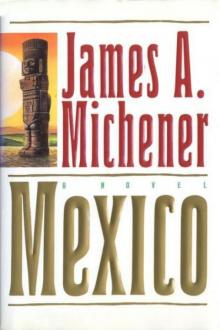 Mexico
Mexico The World Is My Home: A Memoir
The World Is My Home: A Memoir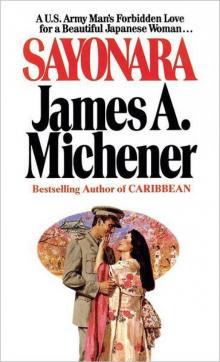 Sayonara
Sayonara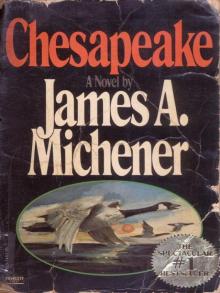 Chesapeake
Chesapeake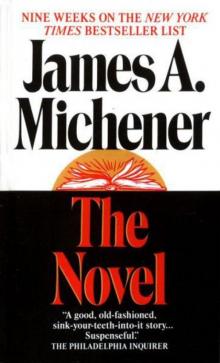 The Novel
The Novel Rascals in Paradise
Rascals in Paradise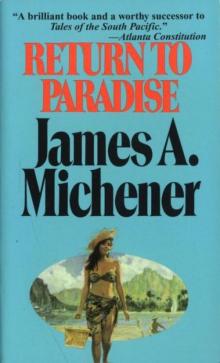 Return to Paradise
Return to Paradise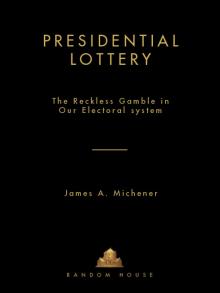 Presidential Lottery: The Reckless Gamble in Our Electoral System
Presidential Lottery: The Reckless Gamble in Our Electoral System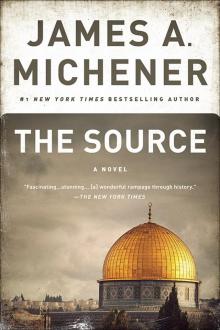 The Source
The Source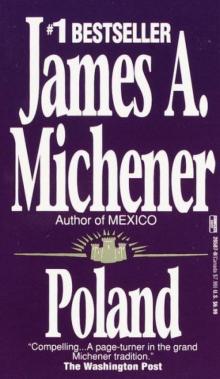 Poland
Poland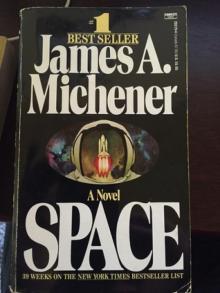 Space
Space Caravans
Caravans Creatures of the Kingdom: Stories of Animals and Nature
Creatures of the Kingdom: Stories of Animals and Nature Iberia
Iberia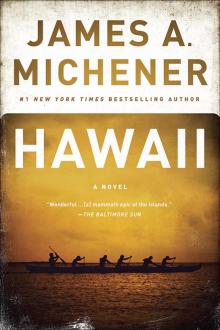 Hawaii
Hawaii The Watermen: Selections From Chesapeake
The Watermen: Selections From Chesapeake Report of the County Chairman
Report of the County Chairman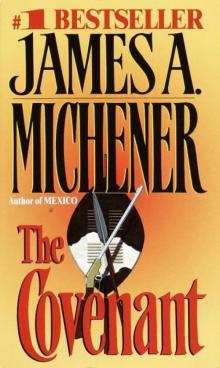 The Covenant
The Covenant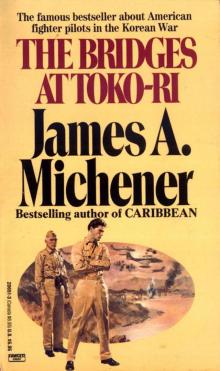 The Bridges at Toko-ri
The Bridges at Toko-ri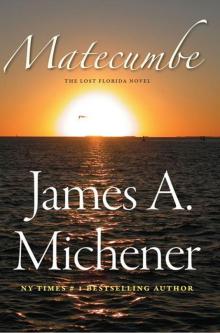 Matecumbe
Matecumbe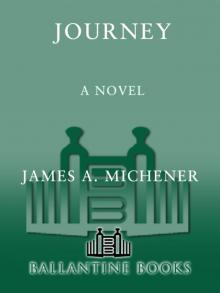 Journey: A Novel
Journey: A Novel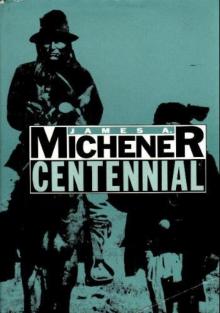 Centennial
Centennial Sports in America
Sports in America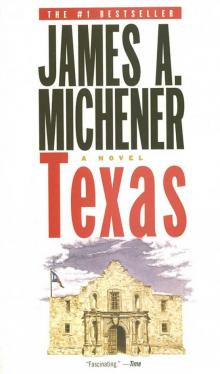 Texas
Texas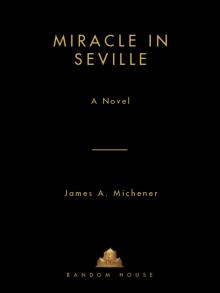 Miracle in Seville
Miracle in Seville This Noble Land: My Vision for America
This Noble Land: My Vision for America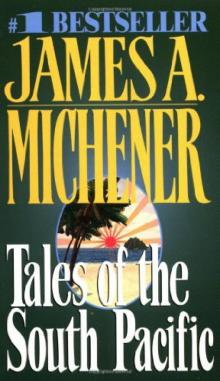 Tales of the South Pacific
Tales of the South Pacific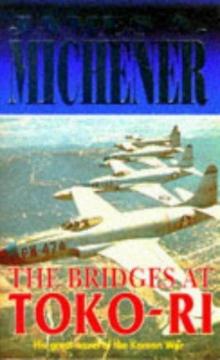 Bridges at Toko-Ri
Bridges at Toko-Ri Space: A Novel
Space: A Novel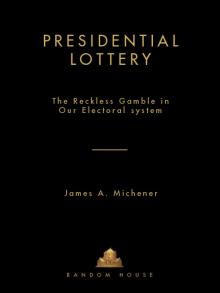 Presidential Lottery
Presidential Lottery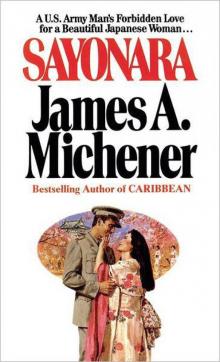 Sayonara: A Novel
Sayonara: A Novel This Noble Land
This Noble Land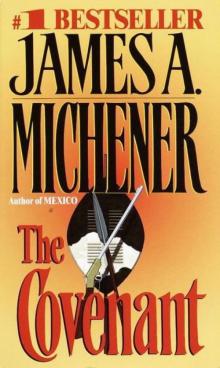 The Covenant: A Novel
The Covenant: A Novel Miracle in Seville: A Novel
Miracle in Seville: A Novel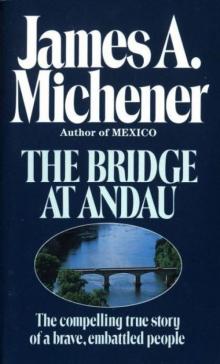 The Bridge at Andau
The Bridge at Andau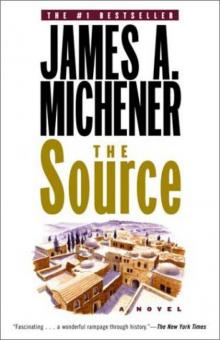 Source
Source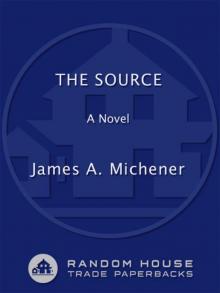 The Source: A Novel
The Source: A Novel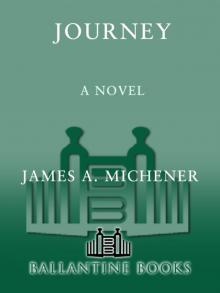 Journey
Journey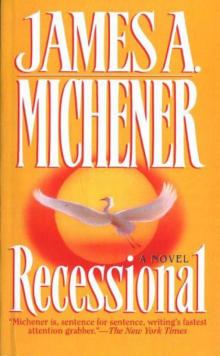 Recessional: A Novel
Recessional: A Novel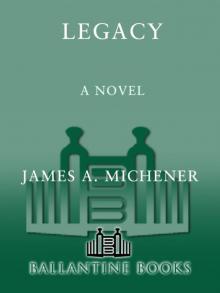 Legacy: A Novel
Legacy: A Novel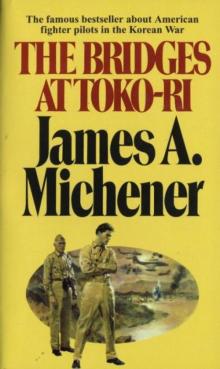 The Bridges at Toko-Ri: A Novel
The Bridges at Toko-Ri: A Novel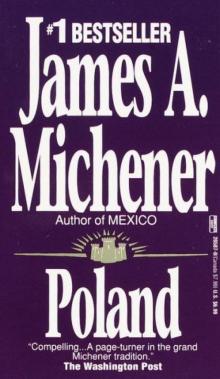 Poland: A Novel
Poland: A Novel